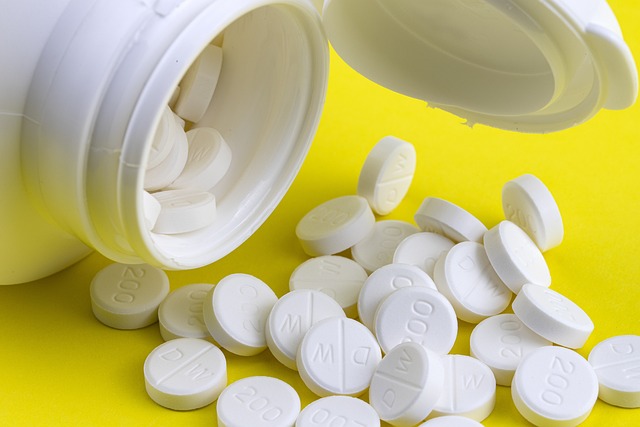Post-operative regenerative treatments have become a cornerstone in modern medicine, offering advanced therapies that enhance recovery and improve patient outcomes. These treatments harness the body's natural healing mechanisms by using a patient's own cells, growth factors, or bioactive molecules to promote tissue regeneration. Notably, platelet-rich plasma (PRP) therapy has gained prominence for its role in accelerating healing at surgical sites through concentrated components from the patient's blood. Stem cell therapies further this innovation by repairing or replacing damaged tissues and organs, potentially reducing recovery periods and minimizing the need for additional surgeries. These treatments are increasingly being integrated into standard care, particularly in orthopedic surgery, where they have shown to significantly improve bone and soft tissue healing. The field is rapidly evolving, with ongoing research expanding the use of regenerative therapies into other surgical areas. The integration of these personalized treatments into medicine represents a commitment to patient-centric, cutting-edge care, with a comprehensive understanding of their mechanisms, applications, and benefits being crucial for medical practitioners guiding patients' post-operative journeys. As regenerative medicine continues to advance, it is poised to integrate with biotechnological innovations like 3D printing and machine learning, ensuring that the future of post-operative care is both personalized and effective, with a focus on restoring not just health but also function and quality of life.
Post-operative recovery has long been a critical phase in the surgical process, with traditional treatments focusing on managing pain and promoting healing. However, the advent of regenerative treatments has revolutionized post-surgical care, offering novel approaches that harness the body’s innate restorative abilities. This article delves into the transformative role of stem cells, PRP therapy, and advanced aPRF techniques in expediting recovery and enhancing wound repair, setting the stage for a new era in medicine where personalized treatment plans are key. Join us as we explore these cutting-edge methods that promise to reshape post-operative care and outcomes.
- Understanding Post-Operative Regenerative Treatments in Modern Medicine
- The Role of Stem Cells in Accelerating Recovery After Surgery
- Platelet-Rich Plasma (PRP) Therapy: A Breakthrough in Healing Post-Surgery
- Advanced Techniques in Autologous Platelet Rich Fibrin (aPRF) for Optimal Wound Repair
- The Future of Post-Operative Care: Regenerative Medicine and Personalized Treatment Plans
Understanding Post-Operative Regenerative Treatments in Modern Medicine

Post-operative regenerative treatments represent a cutting-edge approach in modern medicine, aimed at accelerating healing and improving patient outcomes following surgery. These treatments leverage the body’s natural repair mechanisms by utilizing cells, growth factors, or bioactive molecules to promote tissue regeneration. The use of platelet-rich plasma (PRP), for instance, has become a popular modality within this field, as it harnesses a patient’s own blood components to facilitate healing in surgical sites. Similarly, stem cell therapies offer promise by potentially regenerating damaged tissues and organs, thereby reducing recovery times and the need for additional surgeries.
Advancements in regenerative medicine have led to a paradigm shift in post-operative care, offering alternative paths to traditional recovery methods. These treatments are particularly beneficial in orthopedic surgery, where they can enhance bone and soft tissue healing. Additionally, the field is continuously evolving, with ongoing research exploring the use of these therapies across various surgical disciplines. The integration of regenerative treatments into standard post-operative protocols underscores a commitment to innovative, patient-centric care in contemporary medicine. As such, understanding their mechanisms, applications, and potential benefits is crucial for healthcare professionals tasked with guiding patients through the recovery process.
The Role of Stem Cells in Accelerating Recovery After Surgery

In the realm of post-operative care, stem cells have emerged as a transformative element in accelerating patient recovery. These versatile cells possess the remarkable ability to differentiate into various cell types, offering potential for regenerating damaged tissues and organs. Advanced medicine utilizes stem cell therapies to enhance healing by promoting tissue repair and reducing inflammation, which is pivotal in the early stages of recovery following surgery. The application of stem cells post-surgery not only shortens the healing time but also improves the overall quality of the regenerated tissues, leading to better outcomes and a quicker return to pre-operative functionality for patients.
The therapeutic potential of stem cells is being explored across multiple surgical disciplines, from orthopedics to cardiovascular medicine. These treatments are tailored to each patient’s specific needs, ensuring the highest efficacy. The integration of stem cell therapy into post-operative regimens is a testament to the ongoing innovation within the medical field, providing patients with cutting-edge solutions for faster and more comprehensive recovery. As such, the role of stem cells in post-operative regenerative treatments is becoming increasingly recognized as a cornerstone in modern medicine’s approach to surgery aftercare.
Platelet-Rich Plasma (PRP) Therapy: A Breakthrough in Healing Post-Surgery

In the realm of post-operative regenerative treatments, Platelet-Rich Plasma (PRP) therapy stands out as a groundbreaking advancement in medicine. This innovative treatment harnesses a patient’s own blood components to accelerate healing and recovery following surgery. PRP therapy involves extracting a small sample of the patient’s blood and processing it to concentrate platelets, which are rich in growth factors. These platelets are then re-injected into the injured or surgical site, leveraging their natural healing properties to enhance tissue repair and reduce post-operative recovery time. Clinical studies have demonstrated its efficacy in various surgical contexts, making it a valuable tool for medical professionals aiming to optimize patient outcomes.
The application of PRP therapy is both versatile and precise, targeting specific areas where healing is needed without the systemic side effects often associated with traditional medications. Its use has been particularly successful in orthopedic surgery, dental procedures, and sports medicine, where accelerated healing can significantly improve quality of life and functional recovery. As a result, PRP therapy is becoming an integral component of personalized post-operative care, offering patients a more holistic and less invasive approach to recuperation. The integration of this treatment into standard medical protocols underscores the ongoing evolution in medicine, where cutting-edge science meets patient-centric care.
Advanced Techniques in Autologous Platelet Rich Fibrin (aPRF) for Optimal Wound Repair

In the realm of post-operative regenerative treatments, Autologous Platelet Rich Fibrin (aPRF) stands out for its pivotal role in wound repair. This advanced technique harnesses the patient’s own blood components to facilitate healing, which minimizes the risk of immune rejection and reduces the potential for infection. The aPRF treatment involves isolating platelets from a small sample of the patient’s blood, concentrating them into a fibrin matrix that naturally occurs in the body. This matrix acts as a scaffold, supporting cellular infiltration and growth factor release, thereby enhancing tissue regeneration and wound repair.
Furthermore, the application of aPRF is highly versatile, suitable for a range of surgical interventions including reconstructive, cosmetic, and dental procedures. Its high concentration of platelets and growth factors promotes hemostasis, accelerates tissue healing, and improves the overall outcome of the treatment. The medicine field continues to explore the therapeutic potential of aPRF, with ongoing research aimed at refining its use and expanding its applications across various medical disciplines. This commitment to innovation ensures that aPRF remains at the forefront of regenerative treatments, offering patients an effective and minimally invasive option for post-operative recovery.
The Future of Post-Operative Care: Regenerative Medicine and Personalized Treatment Plans

The future of post-operative care is poised to be revolutionized by the advancements in regenerative medicine. These treatments harness the body’s natural healing mechanisms, utilizing cells, tissues, and bioactive molecules to repair or replace damaged structures. Stem cell therapies, for instance, show promise in accelerating wound healing and restoring function following surgery. The integration of personalized treatment plans further enhances the efficacy of these regenerative interventions. By analyzing a patient’s unique biological and genetic profile, medical professionals can tailor treatments to optimize outcomes, minimizing potential complications and improving recovery times. This individualized approach ensures that each patient receives the most suitable post-operative care, which is critical for achieving the best possible clinical results.
As regenerative medicine continues to evolve, it is anticipated that the combination of advanced biotechnologies with personalized treatment strategies will lead to more successful surgeries and improved patient outcomes. The use of 3D printing in creating scaffolds that mimic a patient’s own tissues is one example of how these technologies can be applied. Moreover, the integration of machine learning algorithms into the decision-making process for post-operative care will likely refine treatment protocols, leading to a new paradigm in medicine where recovery is not just about healing wounds but also about restoring function and quality of life. This paradigm shift underscores the potential for regenerative medicine to transform post-operative care into a highly individualized and effective therapeutic experience.
In conclusion, the advancements in post-operative regenerative treatments represent a significant leap forward in modern medicine. The utilization of stem cells and autologous platelet-rich fibrin, alongside PRP therapy, not only accelerates recovery times but also enhances the overall efficacy of surgical procedures. These innovative approaches pave the way for personalized treatment plans that promise to redefine post-operative care. As we continue to explore and refine these regenerative methods, patients can look forward to treatments that are more effective, with shorter recovery periods and better outcomes. The future of medicine lies in harnessing the body’s natural healing abilities, making recovery from surgery not just a matter of repair, but one of restoration and rejuvenation.
